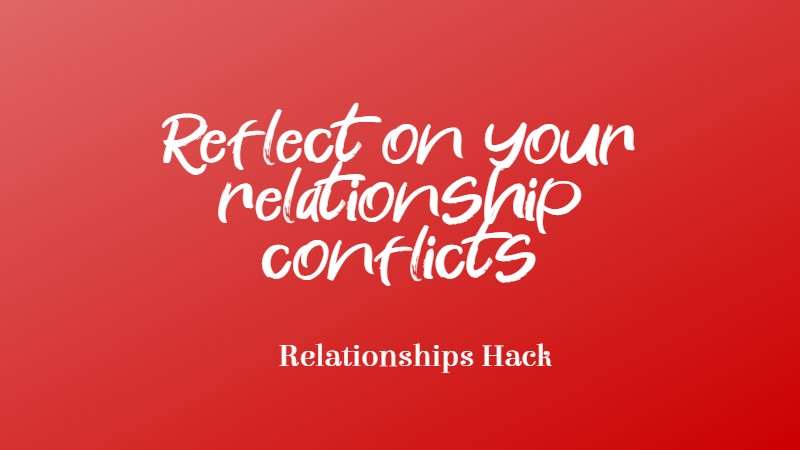Scientists who study couples in conflict labs have noticed something strange: partners rarely fight about what they think they’re fighting about. That argument that starts with “You never take out the trash” or “Why didn’t you call me back?” almost never ends there. Within minutes, couples spiral into accusations about respect, care, and whether they should be together at all.
This odd pattern happens so consistently that researchers named it: the 90-10 rule of conflict. Only about 10% of any fight relates to the surface trigger; the forgotten chore, the missed call, the careless comment. The other 90% comes from deeper emotional currents. Needs for security, fears of abandonment, and desires for validation that go unexpressed.
I’ve watched this play out in my own relationships for years. What looked like fights about money were actually battles about control. What sounded like complaints about schedules were cries for quality time. What felt like criticism about habits were pleas for respect.
Most relationship advice fails because it teaches you how to fight better about the wrong things.
A practical guide to reducing relationship conflicts
“Why are we fighting about dishes again?” I asked myself as another evening with my partner dissolved into tension. What started as a small comment about housework had somehow exploded into an hour-long argument about respect, appreciation, and whether we were right for each other.
Most of us have been caught in these cyclical arguments that seem to come from nowhere and everywhere. One moment you’re talking about an unanswered text, and suddenly you’re in the middle of a full-blown fight about trust issues from three years ago.
What if I told you only 10% of your fights are about what you think they’re about? The rest, a whopping 90%, stem from something much deeper. Understanding this split can transform how you handle conflicts forever.
This guide isn’t about avoiding arguments or using fancy communication techniques that feel awkward in real life. It’s about getting to the heart of what’s really happening when tensions rise, and how to address the actual issues instead of just their symptoms.
What is the 90-10 rule of conflict?
Most advice about relationship conflicts misses a fundamental truth: arguments rarely start because of what was actually said or done. That forgotten chore or ignored text? It’s just the tip of the iceberg.
According to what experts call the “90-10 rule” of conflict, only 10% of fights stem from the immediate trigger, the surface issue that starts the argument. The other 90% comes from underlying emotional needs, past wounds, and unspoken fears that both partners bring to the table.
Does anyone really get upset about dishes in the sink, in and of themselves? No. They get upset about what those dishes represent. Feeling unappreciated, overburdened, or like their needs don’t matter.
I learned this the hard way. For years, my partner and I kept fighting about the same issues in different forms. We tried “communicating better” about these surface problems, but nothing changed. Why? Because we were treating symptoms while ignoring the disease.
A fascinating study of conflicts among women in correctional facilities found that fights appearing to start over trivial matters, like changing the TV channel, were actually about establishing social hierarchy and control. The same psychological mechanism operates in romantic relationships: small triggers mask deeper struggles for validation, security and emotional connection.
Why write about the 90-10 rule?
My own relationship was stuck in an endless loop of recycled arguments. We’d fight about something small, make up, promise to do better… and find ourselves arguing about the same thing two weeks later. It was exhausting.
The turning point came when a counsellor asked us, “What’s this really about?” That question changed everything.
When we dug deeper, we discovered that my frustration about planning dates wasn’t about the planning itself, it was about feeling wanted and valued. Her annoyance about my work schedule wasn’t about time management, it was about a fear of disconnection and abandonment rooted in her childhood.
Once we understood the real issues, everything changed. Arguments that once lasted days were resolved in minutes. Issues that had plagued us for years suddenly made sense. The frequency and intensity of our conflicts dropped dramatically.
This shift happens because when you address the 90% (the emotional core) rather than just the 10% (the trigger), you create lasting change instead of temporary fixes.
How to apply the 90-10 rule to conflict resolution
Look beyond what’s being said to what’s being felt. Stop fighting about the trigger and start talking about the underlying need.
This isn’t about mind-reading or psychoanalysis. It’s about recognizing that human beings have core emotional needs for security, connection, appreciation, autonomy and meaning. When these needs feel threatened, we react.
For example, when Sarah and Mike fought about him being on his phone during dinner, the surface issue was screen time. But the real issue was Sarah feeling unimportant and disconnected. When they addressed the need for quality connection rather than just putting the phone away, their relationship improved dramatically.
This approach works differently because it targets the root cause, not just its expression. Most conflict resolution techniques stay at the surface level, teaching you how to argue “better” about the wrong things. The 90-10 rule helps you identify and address what matters.
Step-by-step guide
First steps (The foundation)
A common pitfall is getting stuck analyzing the trigger (“Who left the dishes?”) instead of addressing the feeling (“I feel taken for granted when I’m always cleaning up”). Focus on the emotion, not the event.
Quick wins come from simply acknowledging the deeper feeling: “I see this makes you feel unimportant to me, and that’s the last thing I want you to feel.”
Building the habit
When things get tough—and they will—remind each other: “This isn’t about [surface issue], it’s about how we both feel.”
A common obstacle is defensive reactions. When your partner brings up a deeper issue, resist the urge to defend against the trigger. Instead, listen for the underlying need. If you find yourselves stuck in blame, try this backup strategy: each partner completes the sentence “This makes me feel…” followed by “…because I need…”
In emergency situations where conflict escalates quickly, use a physical reminder (like touching your wrist) to bring awareness back to the 90-10 principle.
Advanced strategies
Once you’ve mastered basic identification of deeper issues, try mapping your conflict patterns: What triggers lead to what emotional responses for each of you?
For better results, practice proactive need-meeting: “I notice you seem stressed about work. Would spending some quality time together help you feel more connected?”
Ask deeper questions: “When you say you want me to text more, what feeling are you hoping those texts will give you?”
Learn to spot when past experiences colour present reactions: “I notice I get extra sensitive about criticism on Mondays. I think that’s because of my previous job where Monday meetings were always about pointing out failures.”
Real people, real results
Tom and Jessica constantly fought over household management. When they applied the 90-10 rule, they discovered Jessica’s frustration about chores was really about feeling respected and valued. At the same time, Tom’s resistance stemmed from childhood experiences where nothing he did was ever “good enough.” Once they addressed these deeper needs, they created systems that worked for both of them.
Maria found herself picking fights with her new boyfriend whenever he made plans with friends. Using the 90-10 approach, she realized her anger wasn’t about his social life but about her fear of abandonment from previous relationships. By naming this fear directly, they found ways to maintain his independence while giving her the security she needed.
John and David kept arguing about money until they dug deeper and found David’s spending was about finding short-term joy in a stressful life, while John’s frugality was tied to profound financial insecurity from his childhood. This understanding led to a budget that addressed both needs.
An unexpected benefit many couples report is that once you start addressing the 90%, physical intimacy often improves naturally as emotional intimacy deepens.
Practical tips and tricks
When emotions run high, place your hand on your heart before speaking. This physical act can help ground you in your true feelings.
Create a “deeper needs” vocabulary list together, with words that describe your core emotional needs (security, recognition, freedom, etc.).
Use the “observation sandwich” method: state what happened objectively, name the deeper feeling it triggered, and then make a clear request based on the emotional need.
Try the “ten-second rule”—when triggered, wait ten seconds before responding, using that time to ask yourself what’s really going on emotionally.
Common questions answered
“What if my partner won’t engage with deeper issues?”
Start with yourself. Name your own deeper needs first: “When I get angry about the dishes, it’s really because I feel overwhelmed and unappreciated. Could we talk about that instead?”
“How do I know what the deeper issue actually is?”
Look for patterns in your conflicts, physical reactions in your body, and disproportionate emotional responses. These all signal deeper issues at play.
“What if addressing the deeper issue doesn’t resolve the practical problem?”
Once emotional needs are met, practical solutions become much easier to find. Address the 90% first, then collaborate on the 10%.
“How do we break the cycle when we’re both triggered?”
Agree on a pause word that either partner can use when emotions run too high. Take 20 minutes apart, then return and start with: “The thing I’m really feeling is…”
Prompts, questions and exercises to get you started
Reflection exercise
Think about your most recent argument. What was the trigger (10%)? What might have been the underlying emotional need (90%)?
Need identification
Make a list of your top five emotional needs in relationships (respect, security, appreciation, etc.). Share with your partner.
Pattern recognition
What topics do you argue about repeatedly? What deeper theme might connect these seemingly different issues?
Childhood origins
How were conflicts handled in your family growing up? How might this influence your current reaction to relationship tensions?
Trigger mapping
For one week, note when you feel strong negative emotions. What happened right before? What does this reveal about your deeper needs?
Your action plan
Applying the 90-10 rule isn’t about never having conflicts. It’s about making sure your conflicts actually matter and lead to growth rather than just recycled pain. When you fight about what’s real instead of what’s on the surface, you build a relationship with true emotional intimacy.




Leave feedback about this